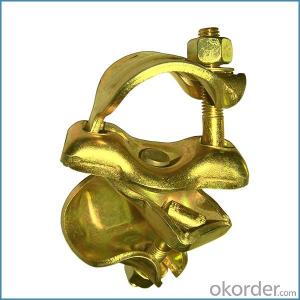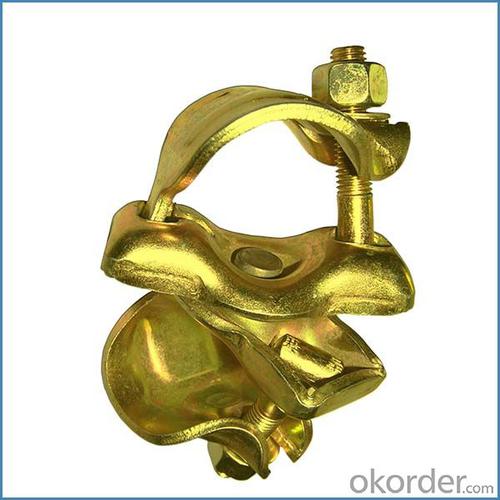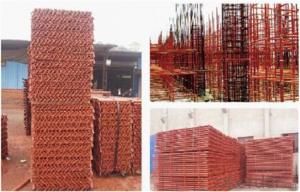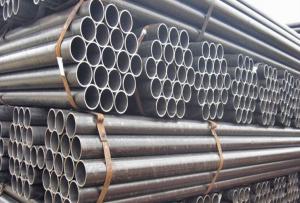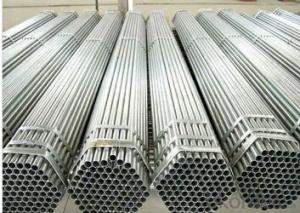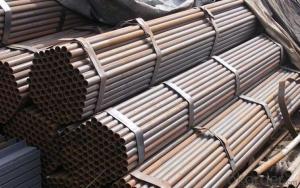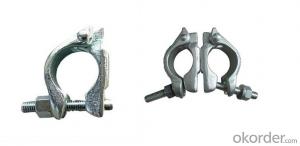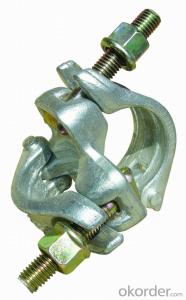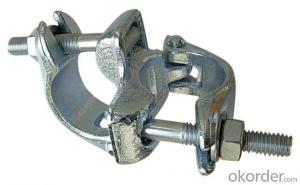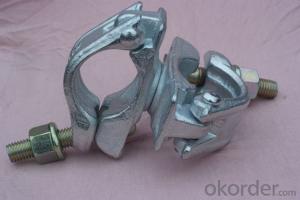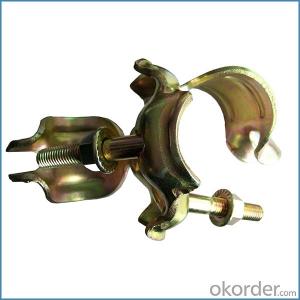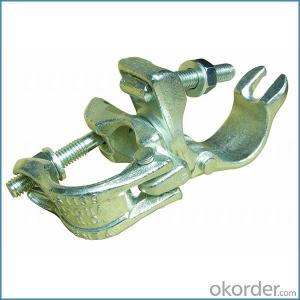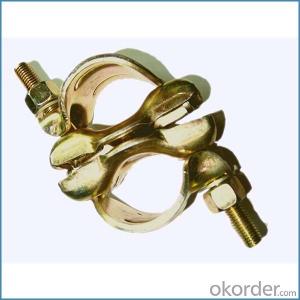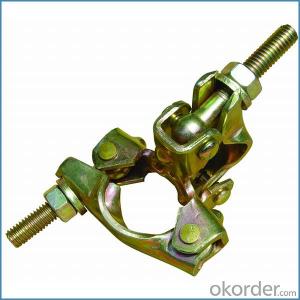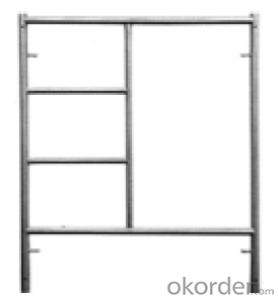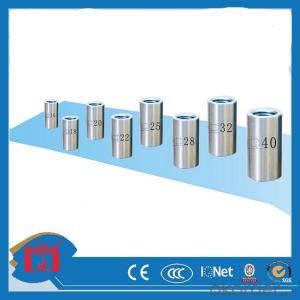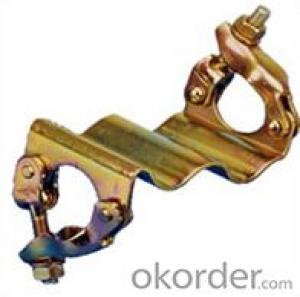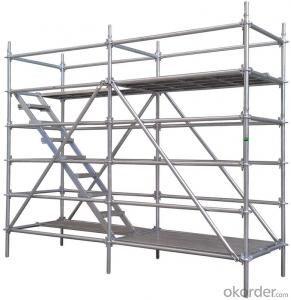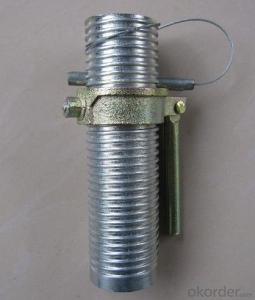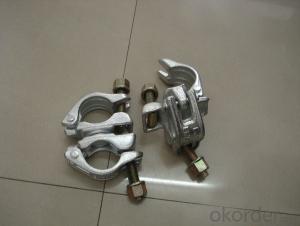Press Coupler British Type for Sale in China
- Loading Port:
- Tianjin
- Payment Terms:
- TT OR LC
- Min Order Qty:
- 1000 kg
- Supply Capability:
- 100000 kg/month
OKorder Service Pledge
OKorder Financial Service
You Might Also Like
Press Coupler British Type for Sale
Description
1.The scaffolding coupler is always used to connect the steel pipe as scaffolding system.
2.The often used coupler is swivel coupler and righ angle coupler .
3.We can provide types of scaffolding coupler according to your requirement.
4.Couoler can fix the 48.3mm scaffolding steel pipe tightly and make the whole scaffolding system more steadily.
5.Material:Q235 steel
6.Overall Size:48.3mm*48.3mm
7.Surface Finish: Galvanized/ Painted
8.Standard:BS1139,EN74
9.Package:25pcs/bag
10.Manufactuering as per customer requirements

Feature
(1)Excellent Anti-Breaking—Cold Pressed Steel
(2)Outstanding Resistance Deformation
(3)Strong Anti-Dropping Ability
(4)Longtime USe
(5)Qualtity Guaranteed
(6)OEM Service
Photo
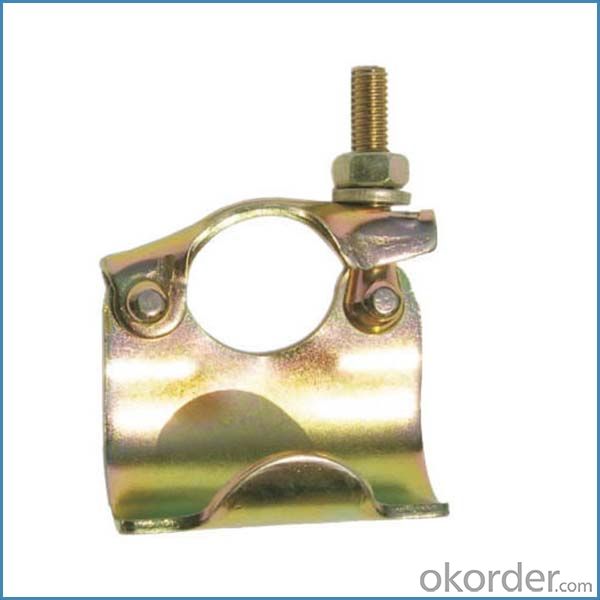
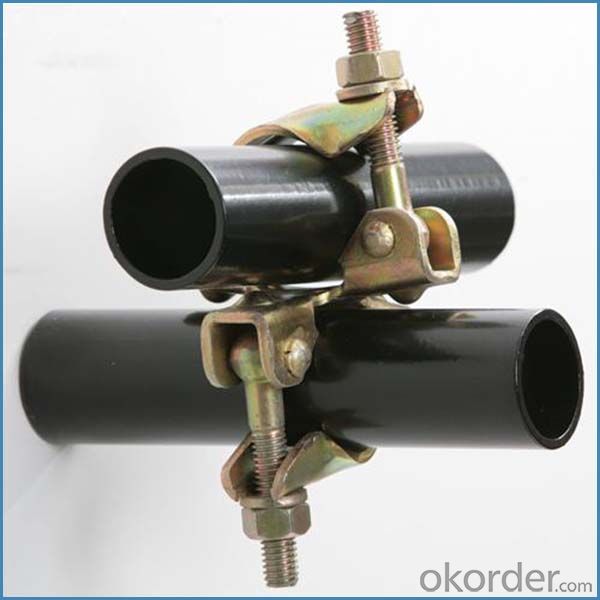
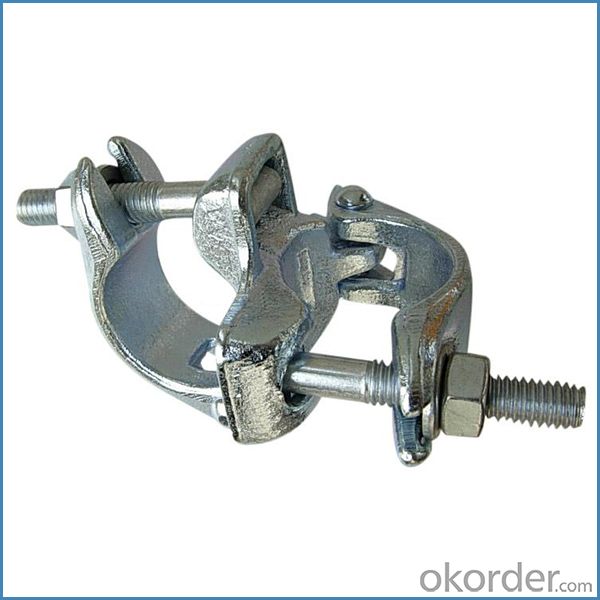
Parameter
| Material | Q235,345steel |
| Size | 48.3mm*48.3mm |
| Surface finish | Galvanized |
| Weight | 1.1kg around |
| Standard | BS1139,EN74 |
| Package | 25pcs/bag,steel pallet |
| Manufacture | As per customer requirement |
| Market | Africa, South America, the Middle East and Asia |
FAQ
Q: Are you a factory or trading company?
We are a state-owned corporation in China,dealing with various kinds of building materials.We have our holding subsidiaries.
Q: Where is your factory located? How can I visit there?
Our factory is located all around China.
Q: Can I get some samples?
Sample is free, customer only pay freight for the first time.
Q: Delivery?
10-30days. (5-15 containers)
Any question,feel free to contact us.
- Q: What is the purpose of a steel tube coupler in scaffolding?
- The purpose of a steel tube coupler in scaffolding is to connect two steel tubes together securely and safely. These couplers are typically used in construction projects where scaffolding is required to provide temporary support for workers and materials. The coupler acts as a strong and reliable connection point, ensuring that the scaffolding structure remains stable and can bear the weight and load placed upon it. It also allows for easy assembly and disassembly of the scaffolding system, making it a versatile and efficient tool for construction projects. Additionally, the steel tube coupler helps to maintain the overall integrity and safety of the scaffolding structure by preventing any movement or separation of the connected tubes. Overall, the purpose of a steel tube coupler in scaffolding is to provide a secure and stable connection that ensures the safety and efficiency of construction projects.
- Q: Can steel tube couplers be used with different sizes of scaffolding tubes?
- Yes, steel tube couplers can be used with different sizes of scaffolding tubes. Steel tube couplers are designed to connect scaffolding tubes of various sizes securely and provide a strong and stable connection. This versatility allows for flexibility in constructing scaffolding systems using different sizes of tubes as needed.
- Q: Are there any alternatives to steel tube couplers in scaffolding?
- Yes, there are alternative materials to steel tube couplers in scaffolding. Some examples include aluminum tube couplers, fiberglass tube couplers, and plastic tube couplers. These alternatives offer different benefits such as being lighter in weight, corrosion-resistant, or non-conductive, depending on the specific needs of the scaffolding project.
- Q: a house. How far can the painter walk to the right hand side of the board before it tips? The mass of the painter is 80kg and the mass of the board is 30kg.
- Cannot be answered: insufficient data supplied. We need to know where the scaffold poles are in relation to the board.
- Q: How do steel tube couplers contribute to the overall stability of a scaffolding system?
- The overall stability of a scaffolding system is greatly enhanced by the use of steel tube couplers. These couplers are specifically designed to connect steel tubes together, creating a strong and secure framework. One important aspect of steel tube couplers is their ability to create a rigid connection between the tubes, resulting in a solid structure. By securely fastening the tubes together, the couplers prevent any movement or rotation, thus maintaining the stability of the scaffolding system. This is particularly crucial for ensuring the safety of workers who rely on the scaffolding for support while working at elevated heights. In addition, steel tube couplers enable the scaffolding system to withstand heavy loads and forces. The weight is evenly distributed across the connected tubes by the couplers, preventing any concentration of stress or strain on a single point. This distributed load capacity enhances the overall stability of the scaffolding system, ensuring its ability to handle the demands of various construction and maintenance activities. Furthermore, steel tube couplers contribute to the adaptability and versatility of scaffolding systems. Different types of couplers, such as swivel, right-angle, and sleeve couplers, allow for various configurations and angles to be achieved. This adaptability allows scaffolding systems to be customized to meet specific construction requirements, further enhancing their overall stability. In conclusion, steel tube couplers play a vital role in the overall stability of a scaffolding system. They provide a rigid connection between tubes, distribute loads evenly, and allow for adaptability. These couplers are essential components in any construction or maintenance project, ensuring the safety and reliability of scaffolding structures.
- Q: Can steel tube couplers be used for scaffolding projects that involve working at extreme heights?
- Yes, steel tube couplers can be used for scaffolding projects that involve working at extreme heights. Steel tube couplers are commonly used in scaffolding systems to connect and secure steel tubes together, providing a strong and stable structure. These couplers are designed to withstand heavy loads and provide a reliable connection, making them suitable for projects involving working at extreme heights. Additionally, steel tube couplers are known for their durability and resistance to weather elements, ensuring that the scaffolding system remains safe and secure even in challenging conditions. However, it is crucial to ensure that the scaffolding system is designed and installed by trained professionals following all safety regulations and guidelines to ensure the utmost safety of workers working at extreme heights.
- Q: How do steel tube couplers compare to other materials like aluminum or plastic in scaffolding?
- Steel tube couplers are widely used in scaffolding due to their superior strength and durability compared to other materials like aluminum or plastic. One of the main advantages of steel tube couplers is their high load-bearing capacity. They are capable of handling heavy loads and provide a stable and secure platform for workers to perform their tasks. In terms of durability, steel tube couplers are known for their longevity. They have a longer lifespan compared to aluminum or plastic couplers, making them a cost-effective choice in the long run. Steel is resistant to corrosion, which is a common concern in scaffolding applications, especially in outdoor or harsh environments. Moreover, steel tube couplers offer excellent stability and safety. They provide a rigid connection between scaffolding tubes, ensuring that the structure remains sturdy and secure. This is particularly important when working at heights or in areas with high wind loads, where a strong and reliable scaffolding system is crucial. While aluminum and plastic couplers may have their own advantages, such as lighter weight or ease of handling, they often lack the strength and durability provided by steel tube couplers. Aluminum couplers are commonly used in situations where weight is a major concern, such as in lightweight scaffolding or for quick assembly and disassembly. Plastic couplers may be suitable for certain applications, but they are generally not recommended for heavy-duty or high-load situations. In summary, steel tube couplers are the preferred choice in scaffolding due to their superior strength, durability, and stability. They offer a reliable and long-lasting solution that ensures the safety of workers and the efficiency of construction projects.
- Q: Are steel tube couplers resistant to vibrations and movement in the scaffolding structure?
- Yes, steel tube couplers are highly resistant to vibrations and movement in the scaffolding structure. They provide a strong and secure connection between tubes, ensuring stability and minimizing any potential movement or vibrations.
- Q: they cover the side walk and have like metal bars on the edge facing the street
- They are called sidewalk sheds or sidewalk bridges and are used to protect pedestrians from falling debris. Usually this is a construction site, but can be where the building is in bad shape and inherently dangerous.
- Q: How do you inspect steel tube couplers for any signs of damage or wear?
- To inspect steel tube couplers for signs of damage or wear, you can follow a few steps. Firstly, visually examine the couplers for any visible cracks, dents, or deformities. Look for signs of rust or corrosion as well. Secondly, use a flashlight to inspect the interior of the couplers, checking for any obstructions or irregularities. Finally, perform a tactile examination by running your hands along the surface of the couplers to feel for any roughness, burrs, or other abnormalities. This comprehensive inspection will help identify any potential damage or wear in steel tube couplers.
Send your message to us
Press Coupler British Type for Sale in China
- Loading Port:
- Tianjin
- Payment Terms:
- TT OR LC
- Min Order Qty:
- 1000 kg
- Supply Capability:
- 100000 kg/month
OKorder Service Pledge
OKorder Financial Service
Similar products
Hot products
Hot Searches
